Syriac and Eastern Christianity
Comparative Edition of the Syriac Gospels (4-volume set)
ISBN: 1-59333-257-2
This new edition conveniently provides the text of all three versions of the Syriac Gospels in one place for the first time. Drawn from the best sources, they are carefully aligned so that their inter-relationship can immediately be seen and studied.
From $116.00
Monks and Monasteries of the Near East
By Jules Leroy
ISBN: 1-59333-276-9
Jules Leroy, the French art expert, spent several months touring the Near East in search of Early Christian remains. During this time he visited most of the monasteries in Egypt, Syria, the Lebanon, Palestine, and Iraq.
$96.00
Mosul and Its Minorities
By H. C. Luke
ISBN: 1-59333-107-X
Luke, once Assistant Governor of Jerusalem for the British Mandate government, hopes "to make these singularly interesting peoples better known to English readers, and to win for them additional sympathy in the difficult times through which they are passing."
$135.00
The Ancient Church Orders
ISBN: 1-59333-099-5
The Church Orders are an interesting series of manuals in The Ancient Church Orders. A. J. Maclean makes them better known to the modern reader, and explains the extent to which they throw light on early Christian worship and customs.
$134.00
Early Eastern Christianity
St. Margaret's Lectures
ISBN: 1-59333-101-0
Contains six lectures: early bishops of Edessa, Bible in Syriac, early Syriac theology, marriage and the sacraments, Bardaisan and his disciples, Acts of Judas Thomas, and Hymn of the Soul. They were delivered in 1904 by Burkitt, then lecturer in paleography, at the University of Cambridge.
$146.00
The Holy Eastern Church
A Popular Outline of its History, Doctrines, Liturgies and Vestments
ISBN: 1-59333-108-8
A brief introduction to Eastern Orthodoxy written at the time of renewed English interest in its liturgical past, this guidebook provides the essentials of Eastern Christianity for that time. The book provides an overview of the history, doctrines, liturgies, and vestments of the Orthodox tradition.
$115.00
Kurds and Christians
ISBN: 1-59333-106-1
This book is a compilation of letters, narratives of journeys and local traditions, and various documents pertaining to the Archbishop of Canterbury's Mission to the Assyrian Church of the East.
$154.00
Christian - Queen - Myth of Love
A Woman of Late Antiquity: Historical Reality and Literary Effect
By Wilhelm Baum
ISBN: 1-59333-282-3
Shirin, the beloved wife of the Persian shah, Chosroes II (b. 628), pulled political strings behind the scenes and supported the Christian minority in Iran.
$64.00
Amurath to Amurath
A Journey Along the Banks of the Euphrates
ISBN: 1-59333-153-3
Gertrude Bell, the well-known explorer and archaeologist, began her extensive travels in the Near East in 1892. In her trips, she surveyed and photographed the areas which she visited and investigated archeological sites.
$89.00
Six Months in a Syrian Monastery
Being the Record of a Visit to the Head Quarters of the Syrian Church in Mesopotamia with some Account of the Yazidis or Devil Worshippers of Mosul and El Julwah, their Sacred Book
ISBN: 1-59333-152-5
This is an expert description of the Syrian Orthodox Church and all the more important for being practically the only book of its kind, even now. Parry is among the best writers in the genre of ecclesiastical tourism.
$102.00
Eastern Liturgies
ISBN: 1-59333-118-5
In one volume, this classic in liturgical studies brings together the main types of Eucharistic liturgy of the various Eastern Christian Churches. For more than a century it has been a reference for students and scholars in comparative liturgy.
$115.00
Meccan Trade and the Rise of Islam
Series: Gorgias Islamic Studies 6
ISBN: 978-1-59333-102-3
Patricia Crone reassesses one of the most widely accepted dogmas in contemporary accounts of the beginnings of Islam: the supposition that Mecca was a trading center. In addition, she seeks to elucidate sources on which we should reconstruct our picture of the birth of the new religion in Arabia.
$159.00
Antient Liturgies
ISBN: 1-59333-100-2
Antient Liturgies was a valuable resource at an early stage in comparative liturgical studies and continues to provide a broad overview of the diversity of early Christian worship in an accessible and convenient format for students and scholars.
$202.00
An Introduction to the History of the Assyrian Church
By W. A. Wigram
ISBN: 1-59333-103-7
In this book, the Rev. William Ainger Wigram, head of the Mission of the Archbishop of Canterbury to the Assyrian Church, gives an introduction to the history of the ancient church, covering its Christology.
$163.00
The Separated Eastern Churches
By P. Janin
ISBN: 1-59333-110-X
Janin's work gives an account of the various churches of the East, both Byzantine and oriental. The author gives the history and organizational structure for each branch of the church.
$145.00
De Catholicis seu Patriarchis Chaldaeorum et Nestorianorum
ISBN: 1-59333-132-0
This book, originally published in Rome in 1775, remains the major reference to the history of the patriarchs of the Church of the East (Chaldean and "Nestorian"). The volume is appended by another work by J.A. Assemani on church unity.
$186.00
Leshono Suryoyo
First Studies in Syriac
By John Healey
Series: Gorgias Handbooks 2
ISBN: 1-59333-190-8
John Healey’s, Leshono Suryoyo, is an introductory grammar for those wishing to learn to read Classical Syriac, one of the major literary dialects of Aramaic and the language of one of the main groups of Middle Eastern churches, including the Syrian Orthodox Church, the Church of the East, and the Chaldaean Church. From the first centuries of the Christian era, Syriac was used by the main theological and historical writers of this tradition (Ephrem the Syrian, Philoxenus of Mabbogh, Thomas of Marga, and Barhebraeus). It also continues to be used in worship.
$48.00
A History of Aramaic-Speaking Christians
By R. Alaux
ISBN: 0-00000-006-X
The Last Assyrians is a film on the survival of the Aramaic-speaking Christians (Assyrians, Chaldeans, Syriacs). The U.S. edition is the English version.
$42.00
Symbols of the Cross in the Writings of the Early Syriac Fathers
ISBN: 1-59333-230-0
The book takes the reader on a journey of cross symbolism. Karim covers topics from the paradise of Eden to the Crucifixion and Golgotha. He discusses the cross as a symbol of historical, sacramental, and eschatological events.
$128.00
"Blessed is He who has brought Adam from Sheol"
Christ's Descent to the Dead in the Theology of Saint Ephrem the Syrian
ISBN: 1-59333-228-9
Buchan’s work is an examination of the theological use of the doctrine of Christ's descent to the dead in the works of Saint Ephrem the Syrian (ca. 306-373 C.E.). Ephrem's conception of Christ's descent to Sheol provides us with an important and distinctive vision of the significance of this salvific event. Ephrem's use of Semitic and non-Western poetic forms and structures as a mode of theological discourse, coupled with his preference for imagery and symbolism rather than definition, resulted in a variety of vivid depictions of Christ's descent to Sheol. The doctrine is shown to be an integral and multifaceted component of Ephrem's theology.
$184.00
'The Blessed City'
By J. B. Segal
ISBN: 1-59333-193-2
This book describes events at Edessa, largely through contemporary accounts and incorporates much new material, notably six mosaics found by the writer between 1952 and 1959.
$159.00
Foundations for Syriac Lexicography I
Colloquia of the International Syriac Language Project
Edited by Dean Forbes & David G.K. Taylor
Series: Perspectives on Syriac Linguistics 1
ISBN: 1-59333-138-X
This volume is the first in a series of collected essays that addresses issues of Syriac linguistics as they relate to a contemporary approach to lexicography. The international team of authors invited to participate represents a wide range of disciplines and opens new horizons in lexical thinking. Special emphasis is placed on the role that technology has, does, and will play in the evolving field of lexicography.
$145.00
The Book of Common Prayer [shhimo] of the Syrian Church (Hardback)
ISBN: 1-59333-246-7
A translation (from the Syriac) of the West Syriac Daily Offices, known as the book of shhimo.
$177.00
The New Syriac Primer, 2nd Edition
Series: Gorgias Handbooks 9
ISBN: 978-1-59333-325-6
A truly useful introduction to the Syriac language is a rare find. This practical initiation to the study of this ancient language of the Christian church speaks with clarity and authority. A fruitful integration of scholarly introduction and practical application, this primer is more than a simple grammar or syntactic introduction to the language. Writing in a style designed for beginners, Kiraz avoids technical language and strives for a reader-friendly inductive approach. Readings from actual Syriac texts allow the student to experience the language first hand and the basics of the grammar of the language are ably explained. The book comes with downloadable material so that readers may listen to all reading sentences and text passages in the book.
$48.00
Homilies of Mar Jacob of Sarug / Homiliae Selectae Mar-Jacobi Sarugensis (6-volume set)
ISBN: 1-59333-327-7
Jacob of Sarug is one of the most celebrated poets of Eastern Christianity and the Syriac tradition. The Gorgias Press edition, edited by Sebastian P. Brock, contains over 100,000 lines of poetry based on Bedjan’s 1905 edition.
From $125.00
Filter by
Filter by price
Filter by manufacturer

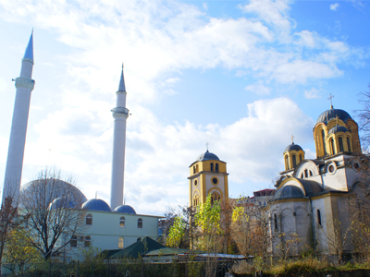
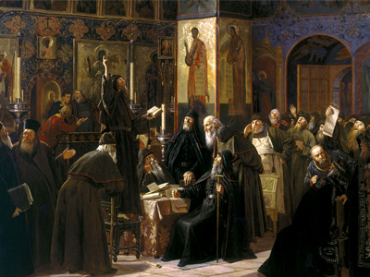
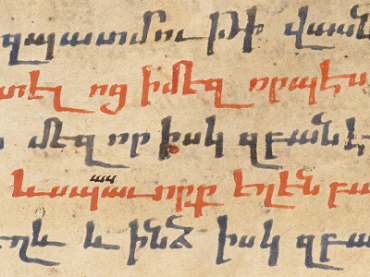
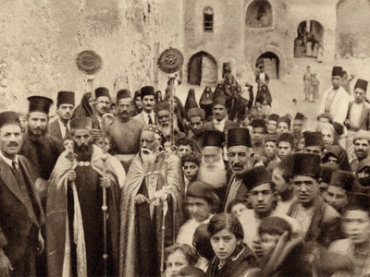
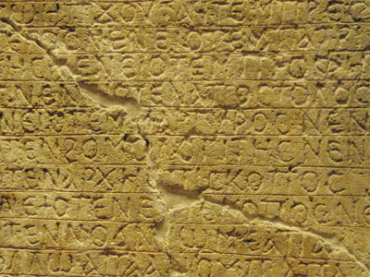
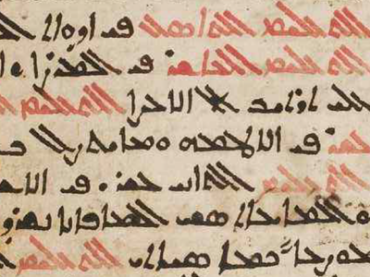






















![Show details for The Book of Common Prayer [shhimo] of the Syrian Church (Hardback) Picture of The Book of Common Prayer [shhimo] of the Syrian Church (Hardback)](https://gorgiaspress450.forefrontinfotech.com/images/thumbs/0012868_the-book-of-common-prayer-shhimo-of-the-syrian-church-hardback_360.png)

